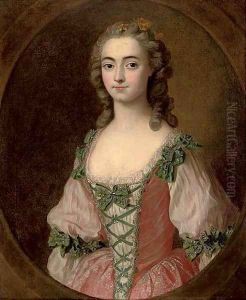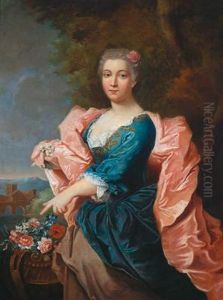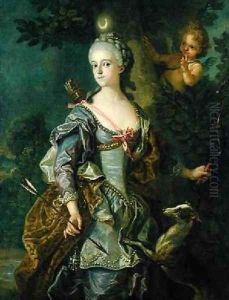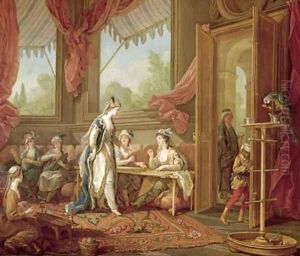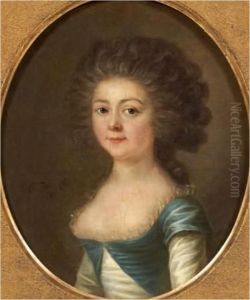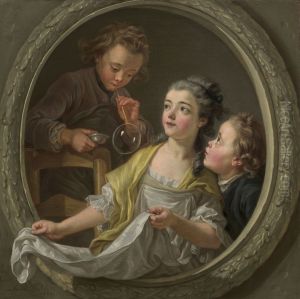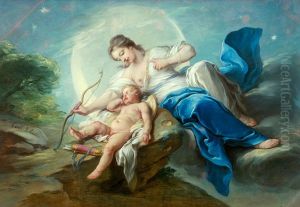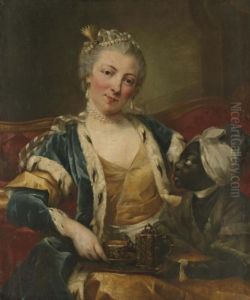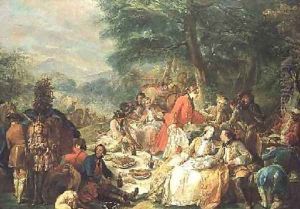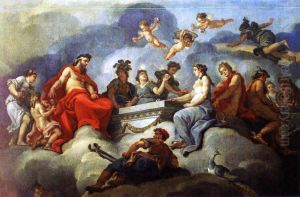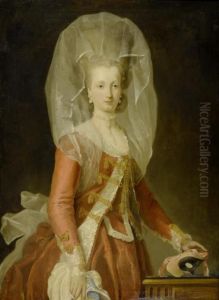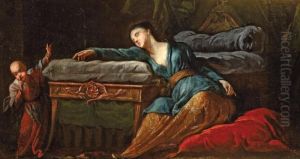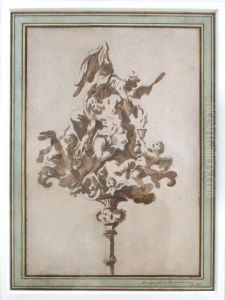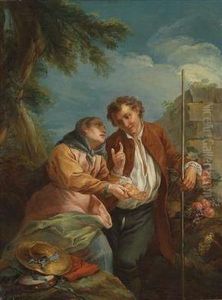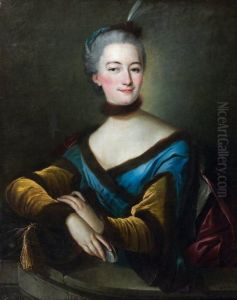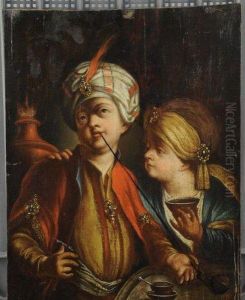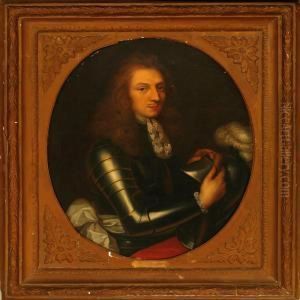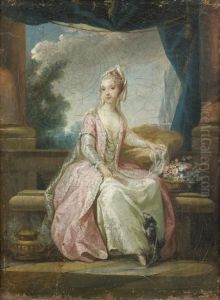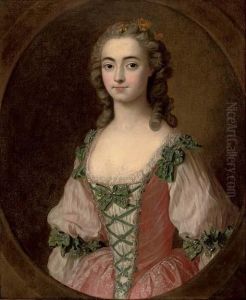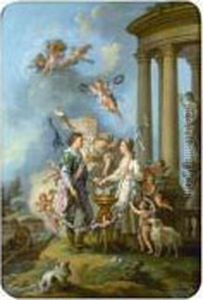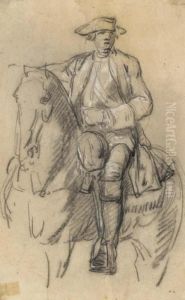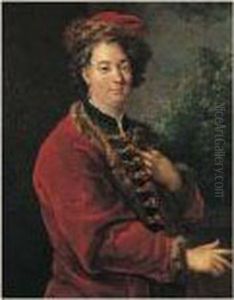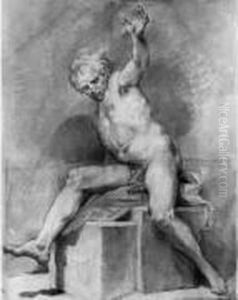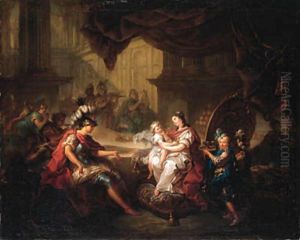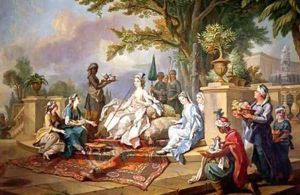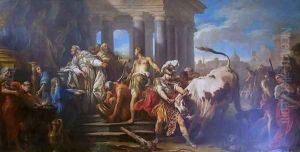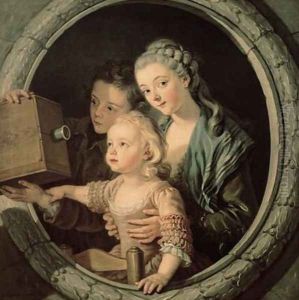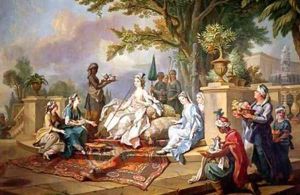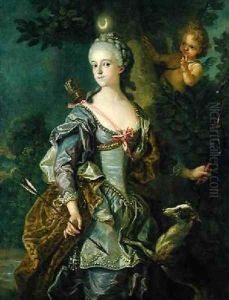Charles-Amedee-Philippe van Loo Paintings
Charles-Amedee-Philippe van Loo was a French painter of allegorical scenes and portraits. He was born on February 25, 1719, in Nice, which at the time was part of the Duchy of Savoy. He came from an important family of painters of Dutch origin, with his father, Jean-Baptiste van Loo, being a well-known portraitist, and his uncle, Charles-André van Loo, a successful history painter.
Charles-Amedee-Philippe was trained by his father and later went to Rome to study under Benedetto Luti and the sculptor Pierre Legros. On returning to Paris, he won the prestigious Prix de Rome in 1743, which allowed him to study in Rome at the expense of the French Academy. There, he further developed his craft and was influenced by the works of the Italian masters.
After his stay in Rome, van Loo returned to Paris and became a member of the Royal Academy of Painting and Sculpture in 1754. He was appointed professor at the Academy in 1763 and later became a member of the Académie de Saint-Luc. Throughout his career, Charles-Amedee-Philippe van Loo painted for the French court and for several notable patrons across Europe. He was known for his fine brushwork, elegant compositions, and the ability to capture the likeness and character of his portrait subjects.
His works included religious and mythological themes, but it was his portraits that garnered him the most acclaim. Despite the achievements of his career, Charles-Amedee-Philippe van Loo is often overshadowed by other members of the prolific van Loo family, particularly his uncle Charles-André van Loo, who was one of the most famous French painters of his time.
Charles-Amedee-Philippe van Loo passed away on November 15, 1795, in Paris. His legacy lives on through his paintings, which can be found in several museums and collections around the world. He remains a respected figure in the history of French 18th-century art, appreciated for his artistic contributions and as part of the van Loo family dynasty, which left a significant mark on European art history.
